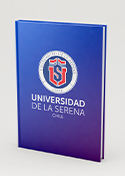Browsing by Author "Tang, B. T."
CAPOS: the bulge Cluster APOgee Survey IV elemental abundances of the bulge globular cluster NGC 6558
(MONTHLY NOTICES OF THE ROYAL ASTRONOMICAL SOCIETY, 2023-10-20) González-Díaz, D.; Fernández-Trincado, J. G.; Villanova, S.; Geisler, D.; Barbuy, B.; Minniti, D.; Beers, T. C.; Bidin, C. M.; Mauro, F.; Muñoz, C.; Tang, B. T.; Soto, M.; Monachesi, A.; Lane, R. R.; Frelijj, H.
This study presents the results concerning six red giant stars members of the globular cluster NGC 6558. Our analysis utilized high-resolution near-infrared spectra obtained through the CAPOS initiative (the APOgee Surv e y of Clusters in the Galactic Bulge), which focuses on surv e ying clusters within the Galactic Bulge, as a component of the Apache Point Observatory Galactic Evolution Experiment II surv e y (APOGEE-2). We employ the Brussels Automatic Code for Characterizing High accUracy Spectra ( BACCHUS ) code to provide line-by-line elemental-abundances for Fe-peak (Fe, Ni), alpha-(O, Mg, Si, Ca, Ti), light-(C, N), odd-Z (Al), and the s-process element (Ce) for the four stars with high-signal-to-noise ratios. This is the first reliable measure of the CNO abundances for NGC 6558. Our analysis yields a mean metallicity for NGC 6558 of ([Fe/H]) = -1.15 +/- 0.08, with no evidence for a metallicity spread. We find a Solar Ni abundance, ([Ni/Fe]) similar to + 0.01, and a moderate enhancement of alpha-elements, ranging between + 0.16 and < + 0.42, and a slight enhancement of the s-process element ([Ce/Fe]) similar to + 0.19. We also found low levels of ([Al/Fe]) similar to + 0.09, but with a strong enrichment of nitrogen, [N/Fe] > + 0.99, along with a low level of carbon, [C/Fe] < -0.12. This behaviour of Nitrogen-Carbon is a typical chemical signature for the presence of multiple stellar populations in virtually all GCs; this is the first time that it is reported in NGC 6558. We also observed a remarkable consistency in the behaviour of all the chemical species compared to the other CAPOS bulge GCs of the same metallicity.
Multiple Populations in Low-mass Globular Clusters: Eridanus
(ASTROPHYSICAL JOURNAL, 2023-02-01) Wang, Y.; Tang, B. T.; Li, C. Y.; Baumgardt, H.; Muñoz, R. R.; Fernández-Trincado, J. G.; Geisler, D.; Fang, Y. Q.
Multiple populations (MPs), characterized by variations in light elemental abundances, have been found in stellar clusters in the Milky Way, Magellanic Clouds, as well as several other dwarf galaxies. Based on a large number of observations, mass has been suggested to be a key parameter affecting the presence and appearance of MPs in stellar clusters. To further investigate the existence of MPs in low-mass clusters and explore the mass threshold for the formation of MPs, we carried out a project studying the composition of the stellar population in several lowmass Galactic globular clusters. Here we present our study on the cluster Eridanus. With blue-UV low-resolution spectra obtained with the OSIRIS/Multi-object spectrograph on the Gran Telescopio Canarias, we computed the spectral indices of CH and CN for a sample of giant stars and derived their carbon and nitrogen abundances using model spectra. A significant dispersion in the initial surface abundance of nitrogen was found in the sample, indicating the existence of MPs in Eridanus. Inspecting the age-initial mass distribution of in situ clusters with MPs, we find a slight trend that initial mass increases with increasing age, and the lowest initial masses of logM(initial) similar to 4.98 and 5.26 are found at the young and old end, respectively, which might provide a rough reference for the mass threshold for clusters to form MPs. However, more observations of clusters with low initial masses are still necessary before any firm conclusion can be drawn.
